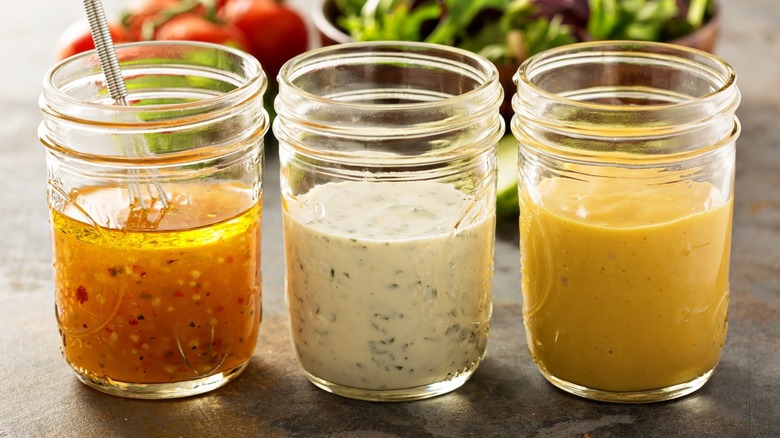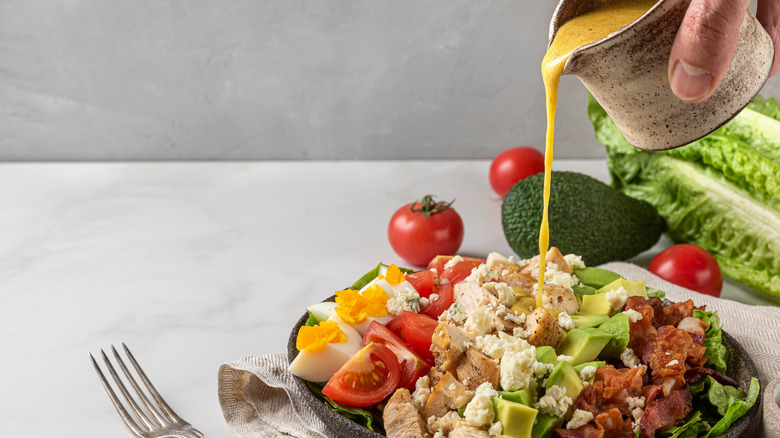The Key To Better Salad Dressing Is Hiding In Your Cabinet
Chances are, if you're underwhelmed by the salads you're crafting at home, you just need to level up your salad dressing game. While there are many pre-made options available at the grocery store, it's incredibly easy to whip up your own batch of dressing. You'll know exactly what's in it, which means no random, unpronounceable chemicals. And, you can customize it to perfectly complement whatever you're using in your salad, really helping bring out and accentuate particular flavors.
In your quest for delicious homemade salad dressing, there's one readily available, inexpensive tool that's an absolute must-have — a Mason jar. You may have assumed, at a minimum, that to make your own dressing you'd have to dirty a bowl, whisk, and storage container for any leftovers remaining in the bowl once you're done. However, using a Mason jar drastically cuts down on clean-up and even helps you craft a smooth dressing.
All you need to do is add your ingredients to the Mason jar, screw on the lid, and then vigorously shake it until everything appears to be emulsified and it has the consistency you're looking for.
Any leftovers can simply be stored in the exact same jar and tossed in the fridge. While it may not last as long as the dressings you find at the grocery store — since it doesn't have any preservatives — it should be fine in your fridge for about one to two weeks, depending on the particular ingredients within the dressing.
Tips for mixing up the perfect salad dressing
You've got the technique mastered and you have a few Mason jars at your disposal so you're free to concoct a few different dressings and mix things up throughout the week — but, how do you go about making a dressing entirely from scratch?
The good news is you can't really go wrong. The only thing you need to be mindful of is your ratios of certain key ingredients. For example, typical vinaigrettes are about 1 part acid — such as vinegar or lemon juice — to 3 parts oil. Creamy dressings, on the other hand, are usually a ratio of 1 part acid to anywhere from 8 to 16 parts fat, depending on the texture of the fat you're using and the final consistency you're seeking. The fats for creamy dressing could be anything from buttermilk to yogurt, mayonnaise, or even something like mashed avocado.
With the ratio in mind, you can truly get creative and experiment with different flavor combinations. If something isn't quite working, it's relatively easy to add other ingredients to balance things out. For example, if you're looking for heat, toss in some red pepper flakes or chili oil. A bit of umami flavor can be achieved with a dollop or two of miso paste. Or, swap out the standard acids like lemon juice and balsamic vinegar and try out grapefruit juice, blood orange juice, or Champagne vinegar.

